We have two subspecies of calyptratus: the calyptratus calyptratus and calyptratus calcarifer. The Chamaeleo calyptratus calyptratus is native of Yemen, the Chamaeleo calyptratus calcarifer is from Saudi Arabia.
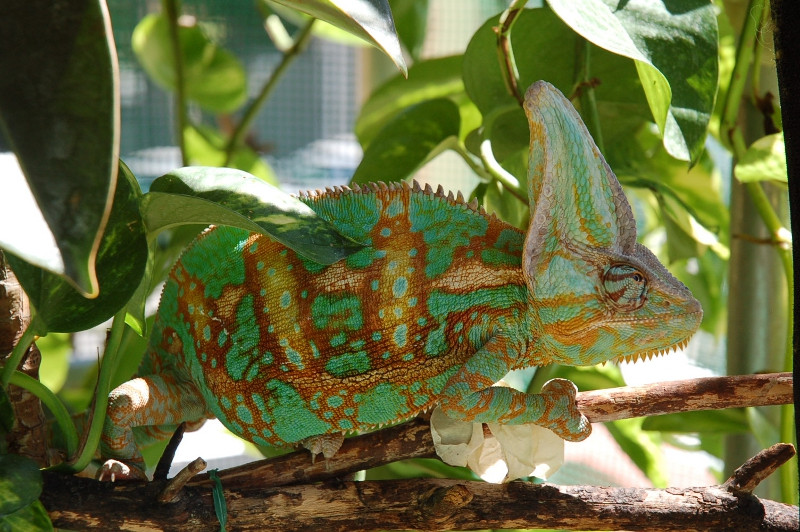
Order: Squamata
Family: Chamaleonidae
Genus: Chamaeleo
Species: Chamaeleo calyptratus
Subspecies: calyptratus calyptratus & calyptratus calcarifer
Common names
Calyptratus (scientific); Veiled Chameleon
Morphology
Eyes: the chameleon is the only animal in the world capable of catching different images at the same time, having a complete 360 degrees. The eyes are almost entirely covered with lids and independent between them. They can also look in one direction, which happens especially to "take aim" when they see a prey.
Tongue: the tongue is sticky and long, capable of stretch with a speed of 20 km per hour, the tip capture prey, and then back inside the mouth, where the meal will be consumed using the teeth.
Legs: their structure of joints is suitable for arboreal life: they serve as pincers for climbing. The front legs have two claws on the external finger and three on the inside one. Vice versa for the hind legs.
NB: the claws, if broken, do not grow back. It is, therefore, better to use plastic nets and not iron / aluminum ones, with a mesh of no more than 0.3 mm.
Tail: the tail is prehensile and acts as a fifth limb, in case of loss is not able to regenerate.
Camouflage: the chameleon is able to change its color according to various factors, including: brightness and temperature; mood states, stress, fear, threat, illness and sexual arousal.
Note: contrary to what you might think, the chameleon does not take the color of what it touches. The color variations that can be made are limited to the range of colors that already has genetically, with only shades switched on or off. Example: if we have a chameleon 100% green, we should not think that turns red if it comes in contact with a red surface.
Behavior
The calyptratus, like most chameleons, are territorial animals that it is better to keep alone in a cage set up only for one specimen. They are reptiles, they do not need to be handled, and the more of them, they will try to make sure that you understand it immediately by swelling, taking darker shades, blowing or even biting (the latter possibility, however, remains rare).
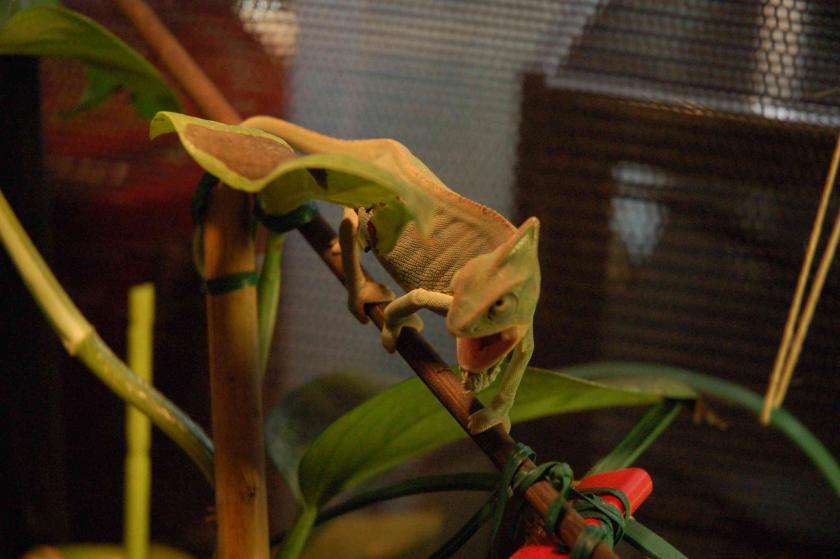
They are arboreal animals, so the cage must be developed in height and in length. Many times you can watch calyptratus perform the same movements on the same branches: they are creatures of habit. It is possible that our chameleons bob about a bit': fall in their behavior. Chameleons do to simulate the movement of the leaves in the wind.
Dimorphism
The male reaches 40 cm in length, the female remains a bit smaller, around 30 cm. The adult male calyptratus has a helmet that can be high even up to 10 cm, the female has the same helmet of significantly reduced size. The colors of the male are more bright, those of the female a bit duller, with dots that take a shade of light blue / blue when it is receptive for mating and a black color to yellow dots and when is pregnant.
The sexual dimorphism is also evident thanks to a spur that the male presents in the back of the hind pincers, between the two groups of fingers.
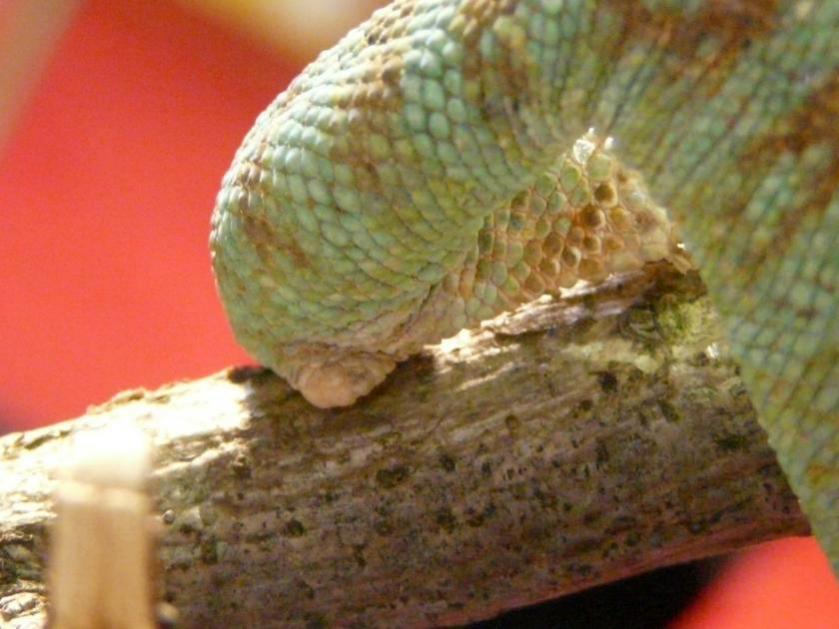
Breeding
The breeding of a calyptratus requires compliance with a few but very important points. The cage must be built in net, in order circles to let the air circulating inside.
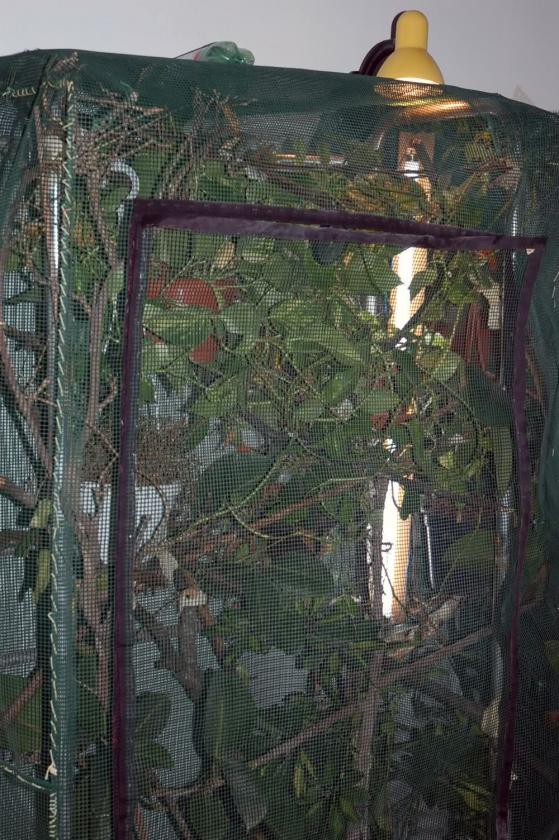
They are to avoid glass and plexiglass, because the chameleon might think, looking at his own reflection, that in the same cage there are other chameleons, becoming stressed. At the bottom of cage is good to put a plant (more than just functional branches) to grow up: we can use the Photos or even a plant of Ficus benjamin (although this plant has a milk inside that could be dangerous to chameleons). It must be pointed out that the chameleon, every now and then, may eat a few leaves of the plant that we put in the cage.
NOTE: To learn more, I invite you to read the card of our friend tornosubito92:
Tartarugando - Chameleon cage set-up
Lighting and heating
To raise a calyptratus it takes no more lights than a person who also breeds other reptiles already has. The lights are two: one spot lamp (available in supermarkets and hardware stores) and a neon tube emitting UVA / UVB 5% (or 5.0, is the same).
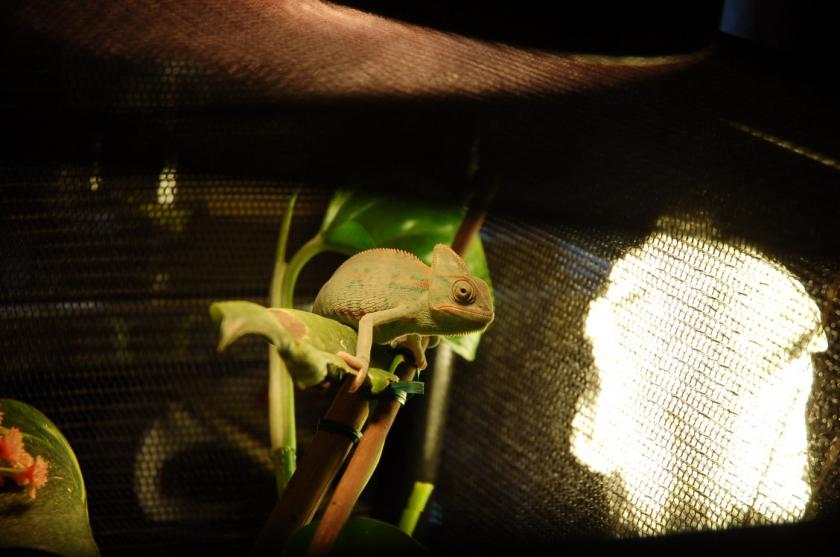
The spot will be placed outside to about 15-20cm from the net while the tube can also be placed inside the cage and positioned both horizontally and vertically. We’ll avoid, the contrary, heating mats and ceramic lamps, because the chameleon could burn even at distance and still dry too mch the environment. Regarding the temperature, the gradient ranges from 26/28° C to 18/20° C, from top to bottom of the cage, with basking spot up to 33° C. During daylight hours it is better than the temperatures do not drop below 20° C, while during the hours of darkness it is better than the temperatures do not drop below 18° C. Regarding the photoperiod, 12 hours of light and 12 hours dark will be fine. An idea could be taking advantage of the 12 hours of light doing so: after connecting the neon UVB lamp on a timer and the spot lamp to another timer, we turn on the neon UVB at 08:00, at 09:00 the spot, so to have a gradual increase in temperatures . To switch off, let's turn off the Spot at 19:00 and the neon UVB 20:00.
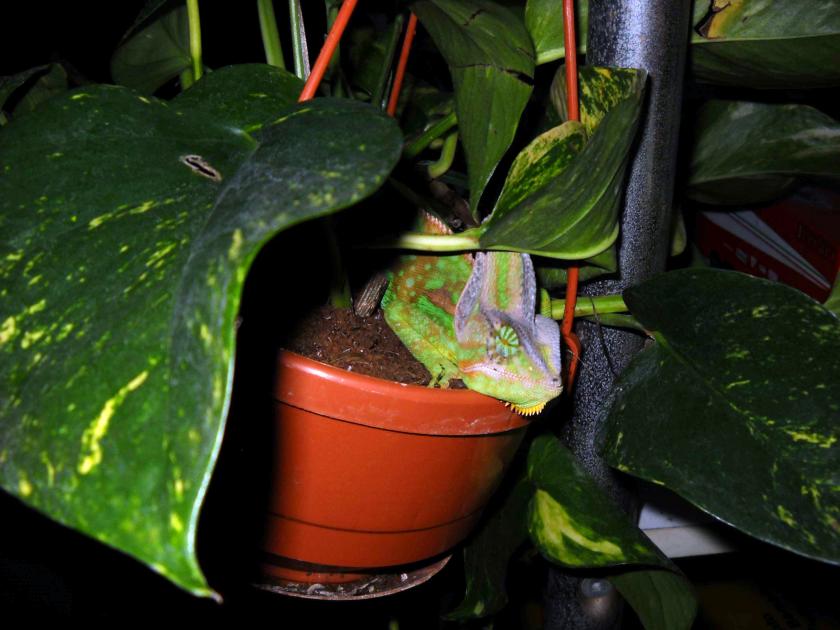
In so doing, we give the chameleon the idea of sun rises and sets, getting thetemperatures to rise and decrease slower than we would do turning both lamps on and off at the same time.
Humidity
In a cage it is impossible to maintain a constant humidity, but do not worry, the plants that we’ll enter and humidity given by a nebulizer (or spray) two or three times a day in winter and 3 or 5 times in the summer when temperatures are higher, will be sufficient. Do not go mad to measure humidity because in a net cage it’s impossible to do. Check only that the chameleon is able to shred within a few hours, this is a good index.
NB: If the chameleon is to having some remaining skin attached to the body, it must not be removed by hand, better to spray a couple of times and try to give time to our chameleon to shred on its own. When the chameleon is shredding, we try to stress it as little as possible: for the animals that shred, it is a source of stress and vulnerability.
Feeding
The feeding of chameleons is the part that most discourages the breeding of these beautiful animals. Chameleons (as well as other reptiles) feed on live insects (chameleons are attracted by the movement of their own prey) and, in case you're wondering, yes, you need to keep live insects in your home.
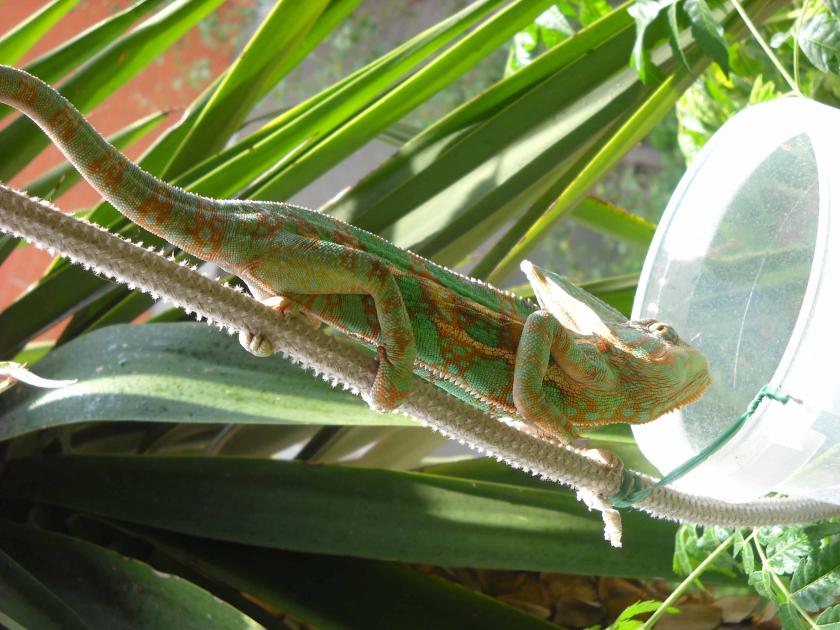
We begin by saying that the insects should not be larger than the head of the chameleon that we are to feed. As for the lamps, even for insects rule applies as before, are the same that you provide to so many other reptiles: crickets, cockroaches, grasshoppers, buffalo worms, flies (only breeding ones), mealworms, Wax moth larvae and their butterflies (better, however, the first two). Pparticularly appreciated by these reptiles are also bugs and bees but please avoid to give the latter because of their usefulness and difficulties which lately have breeding. There are also insects that can be toxic to our chameleons, like fireflies, hornets, ants and potentially insects that carry bright colors such as yellow or orange. How to feed the insects? Inside the cage going to put a container hanging from the branches like yogurt jar of 500gr (which is stable) which will put the bugs in for every meal. It is better that the container is not low, because the bugs could come out and you could find them inside your home.
NB: for the breeding of insects, I refer you to the schedules established by our friend Scorpedine:
Dubia Cockroach
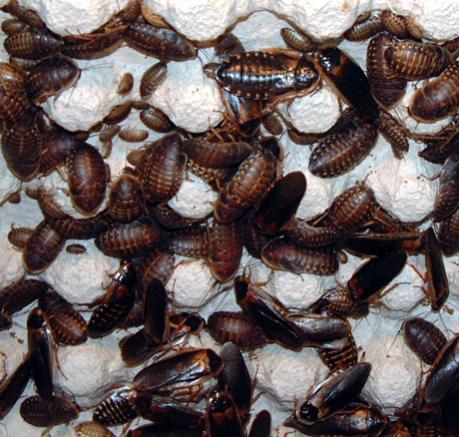
Lateralis Cockroach
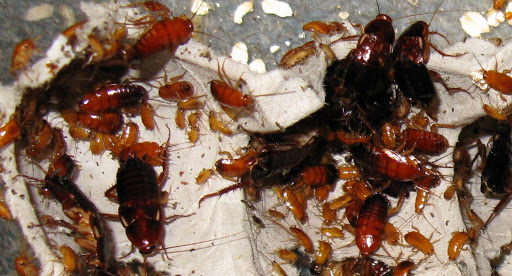
Crickets

How to let our chameleon drink: dripper vs fountain
The chameleon does not drink from a container in which we put the water, because, a bit as with insects, it cannot perceive the movement. Absolutely avoid the use of fountains, where infallibly fall animal feces resulting in self-infestations and articles that produce fog that lower temperatures and vibrations that may cause damage to the animal. Indispensable is the dripper instead: a plastic bottle with a drip infusion (you can buy it in the pharmacy for a few euro). You make a hole on the cap of the bottle and insert the tip of the tubing is filled water bottle, you put it upside down and open the stream with the wheel so that the drops fall on a leaf is easily accessible by the animal. Here's our bacteria-free and quick cleaning watering hole for chameleons.
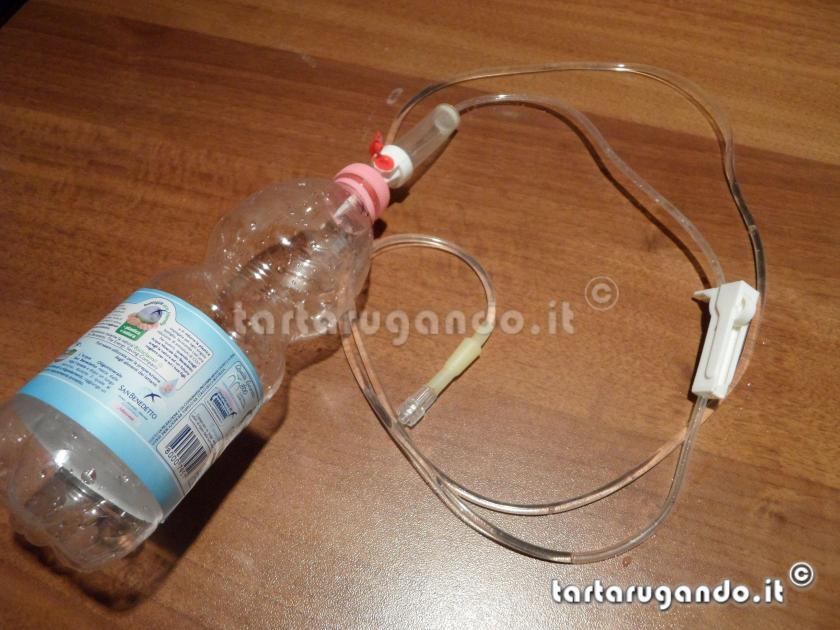
Due to waterings and mist, water can drip onto the floor, so the bottom of the cage will be in net with a tray or in a pan scroll that collects the drops that fall to the ground.
If you really would like to avoid doing it manually, buy a nebulizer to spray automatically as those used in breeding of Dendrobates, but it is only for your laziness.
Calcium integration
A reptile kept in a terrarium / cage does not have the opportunity to take advantage of the light and radiation of the sun (when there’s possibility in the summer, put outdoors in shaded areas), so it can not independently develop a vitamin that the permits the assimilation of calcium. This is the vitamin D3. Not having the ability to produce it itself, we will be the ones to provide it through the food, that we provide to our chameleon, which will be dusted with calcium powder each time (you can also take in the pharmacy: calcium carbonate precipitate. Few Euros per kilo). Within a week, where we feed seven times, we use five times the calcium powder and one or two times the calcium powder with D3 (you can buy it to trade fairs or pet stores that also have items for reptiles , pay attention to expiration because the vit. D3 is rapidly degraded). The not provide calcium to our reptiles kept in a terrarium / cage can lead to serious conditions that, in turn, can lead to death of the specimen. Failure to provide calcium with D3 (twice a week) leads to the non-assimilation of calcium that we provide, on the other hand be careful not to overdo it with the D3 that becomes toxic in excessive doses and that absolutely should NOT be administered if the animals are kept outdoor because the body will produce it autonomously.
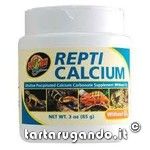
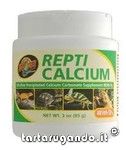
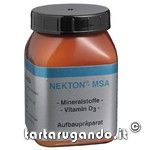
Mating and reproduction
Chameleons have to be raised individually, being aggressive towards individuals of the same species. A male is better kept in the same cage with female only the time for the reproduction and thenit is removed immediately after, to prevent dangerous fights. A female of calyptratus becomes reproductive around 7/8 months old, but it is better not to make it reproduce before reaching one year of age. A sexually mature female may not be receptive: it's when he spots blue / blue on the neck and from what we can understand that it is time to insert the male into her cage. From the mating, gestation of the female can last up to a month. The deposition can vary from 30/40 up to even 90 eggs.
NB: when the female is pregnant needs to drink more, so we try to provide more water from the dripper and greater integration (calcium and vitamins). In this period, to favor the deposition, we insert in the cage a container at least 30cm deep and with a diameter of at least 40cm filled with moist peat, so the female has the ability to dig and lay down.
Eggs incubation
After successful egg laying by the female, gently take the eggs from the laying site, being careful not to overturn them (to avoid to kill the embryo) and we put them in a perforated container (also fine for those foods where normally are sold crickets) on the bottom of which we will put vermiculite and water in a ratio of 1:1 in terms of weight (ie es. vermiculite + 100 gr 100 gr water). For calyptratus’ eggs you don’t need to make the diapause and can be incubated at 27 ° C. The babies will born after 150/180 days.
Babies care
For babies it is best to set up a box type Samla Ikea with some thin branch and a pothos resting on the bottom. Babies can stay in the same box no more than 2/3 months, after that, it is good that each of them has a cage itself. When they are born, the little chameleons do not feed immediately and, when they begin to feed, we provide small insects (we respect the rule of the insect as large as or smaller than the head of the chameleon). Good nutrition can consist of mini crickets and fruit flies, as crickets, moths or otherwise prey too large can cause regurgitation or lead to intestinal obstruction, which can be lethal for baby specimens. With baby specimens it’s better to spray water more frequently than that we do with adults.
Legislation
All chameleons are included in Appendix II of the Washington Convention: they need CITES document if imported and the transfer document if they are specimes born within the EU.
---
A heartfelt thanks to all those people who supported me as Mokimax, Maura72, Turtlej, Kurtino, Drakul, Scorpedine, Tornosubito92 and Andrea D.
A special thanks for their contribution to the realization of this article to Marconyse, Doriana, Rughis, Fbolzicco.
Ugo
Originally written by Ugo
Translated by Drakul
 Benvenuto su Tartarugando, il forum tematico specializzato nell'allevamento di tartarughe e di altri rettili.
Benvenuto su Tartarugando, il forum tematico specializzato nell'allevamento di tartarughe e di altri rettili.





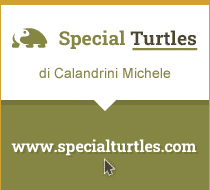
 Elenco delle sezioni
Elenco delle sezioni Elenco delle Categorie
Elenco delle Categorie Nuvola Tag
Nuvola Tag
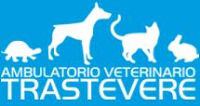
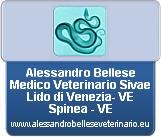

 Articoli recenti
Articoli recenti